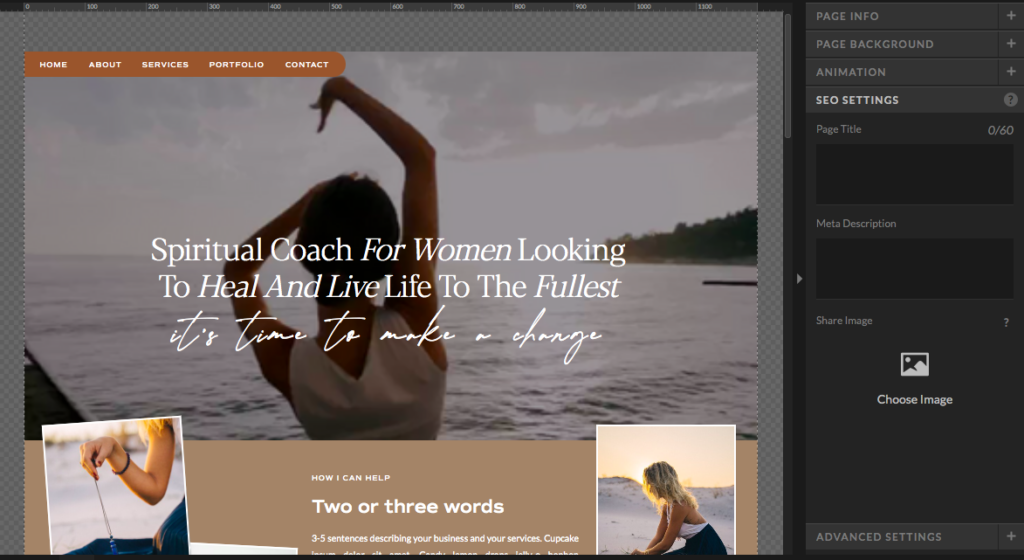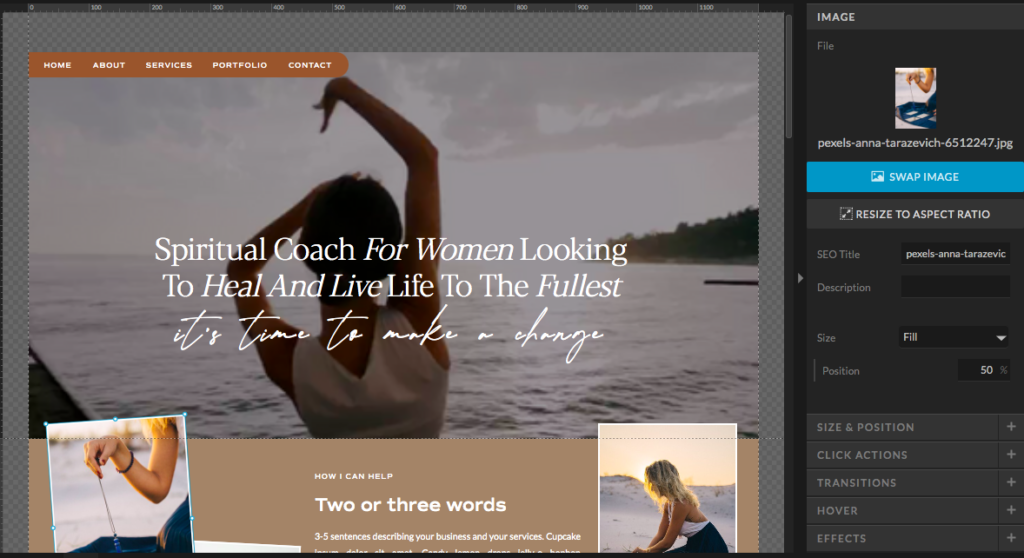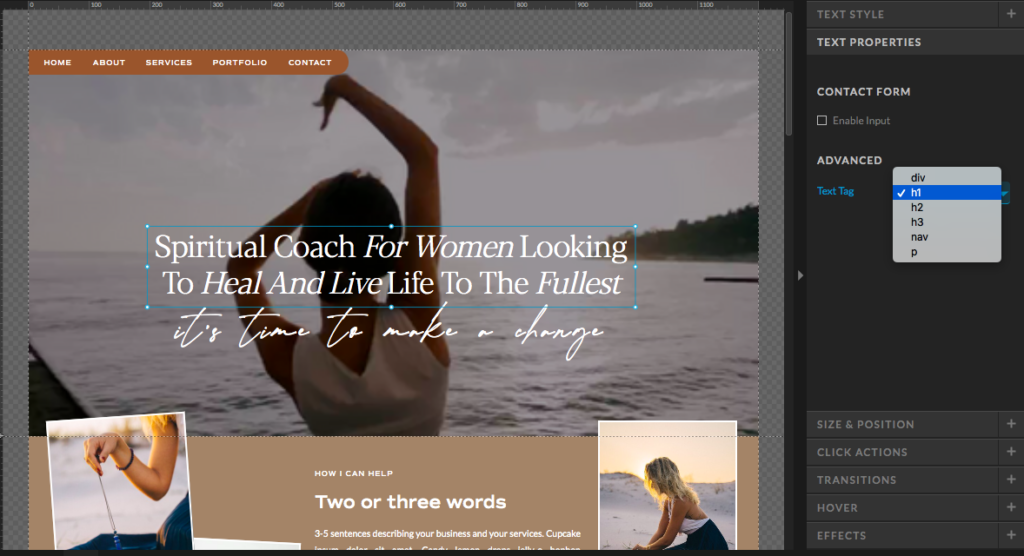How to Optimize your Website SEO in 2024

In 2024, website SEO is a big topic in online marketing.
And I am here for it! If you don’t know what SEO is, let’s get you up to speed.
“SEO stands for search engine optimization. SEO practitioners optimize websites, web pages and content for the purposes of ranking higher in search engines, like Google. SEO is a set of practices designed to improve the appearance, positioning, and usefulness of multiple types of content in the organic search results. This content can include web pages, video media, images, local business listings, and other assets. Because organic search is the top method via which people discover and access online content, utilizing SEO best practices is essential for ensuring that the digital content you publish can be found and chosen by the public, increasing your website’s organic traffic.”
Quote from MOZ
I know that SEO can seem very daunting and overwhelming. But honestly, it is so important to optimize your website SEO. Having a website for your business is a non negotiable (in my humble opinion). Especially if you have an online business and can’t have a space where people can come and experience your brand.
No matter how scary and out of your realm of expertise SEO can seem, I really want you to implement it. You can choose to hire out for Advanced SEO which is the best option so you can turn your website into a powerful marketing tool. But if that’s not available to you then I want you to at least have some basic SEO on your website. And I am going to walk you through that in this post!
We are going to cover on-page SEO, so what you can do on your website to optimize it!
Here is a list of what we will be covering:
- Keyword Research
- Page Title
- Meta Description
- Image Alt-Text
- HTML tags
- Headers
- Page URLs
- Content
- Internal Linking
- Mobile Responsiveness
If you’re completely new to SEO then I know this can seem scary. But I promise you, it’s not as scary as it sounds. I am going to walk you through what each of these things are and why they need to be optimized. I will also walk you through where to add these on Showit. So if you have a Showit website definitely follow along. If your website is not on Showit, that’s okay, you can still learn all of these SEO strategies and implement them on whichever platform you are using. Everything I am sharing with you here will be relevant for all website hosting platforms. The only thing that will vary is where on the website builder you actually add this information. So definitely still feel free to download and use this checklist!

You know you need a website for your business but you have no idea where to start?
Don’t worry, I got you!
Sign up below to download your FREE Website Content Roadmap to get started!

Ok, let’s get into it!
Keyword Research
First off, if you are not familiar with keywords, let’s introduce you!
“Keywords are words or phrases that users type into search engines to find relevant content for their queries. Because keywords come from search queries, incorporating these terms into your content strategy helps search engines rank your website pages and users find your content when looking for it.”
Quote from Hubspot
If you hire an SEO expert we do go more into depth with keyword research. But you can do basic keyword research yourself. You can use the following platforms to do this:
- MOZ
- Answer the Public
I walk you through how to use each of these platforms to do your own keyword research on my blog post “4 ways to do SEO keyword research”. Please head over there to get more details on this step!
I do want to talk about the importance of keyword research as it does play a huge role in your website SEO. And it’s the thing that makes your website such a powerful marketing tool. Just imagine, someone is searching for something on Google and you have the answers! When someone finds you through organic search on Google (organic search is when your website shows up in the search engine results page when someone makes a search query) they are actively looking for what you are selling. It’s not like they just came across your profile randomly, they are already interested in your business. They want more information about your services/product/whatever else. The great thing about organic search is that it drives traffic to your website without you having to pay for ads! What a magical thing right!
Keep these keywords in mind and use them in the following strategies as well. Of course you want to make sure they make sense! Always write your content for humans and not just search engines. You want people to read your content and want to interact with it.

Page Titles
Page titles are exactly what they sound like, the title of your page. Yes, very profound thank you very much!
Jokes aside, they are important! The page title is what you see when you search something on google. You know the results that show up? And the title that you see for each result, that’s the page title.
It’s important because it tells the user what that page on your website is all about. And if their search query matches your page title or your page title piques their interest, they will want to click on your website link!
Meta Descriptions (Page Descriptions)
Meta Descriptions are going to show up the same way as your page titles. They will be the little paragraph you see under the page title in search results. This is a great way for you to capture the users attention and draw them to your website. Give a brief description of what they will learn or what information will be provided on that specific page. Write your description in a way that is going to appeal to your ideal clients.
Image alt-text
Your image alt text is applied to the images on your website.
“Also called alt tags and alt descriptions, alt text is the written copy that appears in place of an image on a webpage if the image fails to load on a user’s screen. This text helps screen-reading tools describe images to visually impaired readers and allows search engines to better crawl and rank your website.”
Quote from Hubspot


In the images above, you can see where to add your Page Titles, Meta Descriptions and Image alt-text on Showit.
Page Titles and Meta Description
When you have a page selected, head over to the Advanced SEO option on the right hand side. You will be able to add your descriptions here. I recommend doing this for all of the pages on your website.
Image alt-text
For the image alt-text, select the image you will see the options to add an image title and description on the right hand side. This is under the image tab.
Here is an example of how Page Title and Meta Descriptions (also known as Page Descriptions) show up in search results


HTML TAGS
I know this sounds slightly scary but it’s going to be okay! Showit makes all of these things so so easy!
“HTML tags are simple instructions that tell a web browser how to format text. You an use tags format italics, line breaks, objects, bullet points, and more. These tags live in the HTML (or the Hypertext Markup Language) of every webpage. Simply put, HTML is the language of web pages.”
Semrush
We want to apply these tags to the text on your website so that search engines can understand your content. And it will tell them what information is more important, basically creating a hierarchy of content.
The HTML tags that you can apply in Showit are:
- H1 – Heading 1 (Page titles)
- H2 – Heading 2 (Canvas or blog titles)
- H3 – Heading3 (Subtitles)
- P – Paragraph (Standard paragraph text)
- Nav – Navigation Links
- Div – Text design elements
It’s best practice for you to apply these tags to all of the copy on your website so that search engines can understand your content better.
Here are some tips when applying these tags:
- Make sure you only have one H1 tag on each page
- Use the NAV tags for your Top Navigation/Menu/Header (whatever you choose to call it!)
- If you’re unsure and it’s not a title or subtitle, use the P (paragraph) tag.
- The DIV tag will automatically be applied if you use the number or bullet list.
Select the text box and then apply the settings on the right hand side. Once you have selected a text box you will see the “Text Properties” tab on the right hand side. Here you can select the tag you want to apply from the text tag drop down.

Headers
Now you know what HTML tags are and how to apply them. We mentioned it above but I just want to reiterate the importance of Headers here. Within Showit we have the option to select 3 different types of Headers:
- H1 – Heading 1
- H2 – Heading 2
- H3 – Heading 3
H1 will be the title of your page, you will only have one H1 tag on each pages of your website. This should include the keywords you want to rank for on that specific page. This is really important because it tells Google what content is on that page.
H2 headings will be used throughout your page. You can think of this as your canvas title. This is going to tell Google and readers what is on that specific section of your website.
H3 tags are going to be subtitles within your H2 headings. Same thing, this helps readers and Google determine what content is within that canvas.
Think of this as taking notes in highschool! You are building a hierarchy of information. You may have multiple H2 and H3 headings on a single page on your website. But you do want to make sure you are trying to use keywords where you can within these tags. Do make sure it makes sense though, avoid what’s called “keyword stuffing”. Where you just add keywords for the sake of adding them. Google caught on to this years ago and your website can be penalized for it. So always remember to write for humans first.

Page URLs
Your Page URL will consist of your domain and then a path to a specific page on your website.
Make your URL very clear so users and Google can understand what that page is about. I’m sure you are noticing a theme here. It’s so important to make sure we are very clear with our web page content. Our keywords help us do this and we are implementing them throughout our SEO strategy.
Just be mindful, it always has to make sense and never keyword stuff! You can rank for multiple keywords on a page so don’t just use the exact same words over and over.
Your page URL will be determined by the title of your page on Showit. I said “title of your page” and not “page title” because it is different!
You can see in the image below, all of the pages on your website are named on the left hand side. The name here will be used as your page URL.
Important: be sure to name your pages appropriately prior to linking anything on your website. When you change these titles it will break any links you had previously linked.

Content
The content on your website and on each specific page is super important. You want to make sure it’s relevant to the topic you have determined for that page. This is what you have done your keyword research on and added throughout your meta settings.
If your content does not match the keywords you are trying to rank for it won’t be long before Google catches on! If someone finds a page on your website through organic search, and realizes it doesn’t actually match what they are searching for, they won’t stick around long. This will show search engines that your content does not match or was not providing the answers the user was searching for. Which can negatively affect your SEO.
And more importantly, you want to provide value to your community. So creating content that is helpful is always the number one focus!
Internal linking
Internal linking is just that, linking to pages on your website. The longer users stay on your website means that they are enjoying your content. They are engaging with your website and find it informative/valuable/interesting. This is great for SEO.
And you can direct users to take action through CTAs. You can direct them towards learning more about specific topics. Guide them to learn more about your services/products. Internal linking is a great way to get your users engaged and guide them through your website.
Mobile responsiveness
According to a study done by Forbes in 2024, 54% of all website traffic came from mobile devices. This is why it’s so important that your website is optimized for mobile!
Meaning your website looks good and is user friendly on a mobile device. This is why I absolutely love Showit because we can literally design a completely separate design on mobile vs. desktop. Making it super customizable and you got it, mobile optimized!
It’s also interesting to take a look at your own audience. Use your Google Analytics to take a look at what device your users are coming from! I love this kind of data! Then you can really start to get creative with how you are serving your audience.
We have covered the basics of SEO here and what you can do right now to get started with an SEO optimized website. However, there is so much more we can do! We haven’t even touched on blogging yet! So if you are interested in learning more definitely reach out to me and I would love to do a website audit and see how we can use your website as a powerful marketing tool!

You will also love…
The Mindful Approach to Website Navigation and User Experience
Website SEO for Holistic Entrepreneurs: Attracting Your Tribe Organically
Manifesting Success: Designing a Website for Your Dreams
Content Marketing as a Projector in Human Design
The Power of an Authentic Website in Attracting Your Ideal Clients